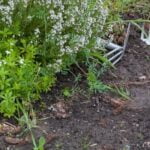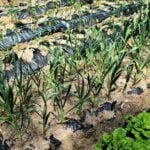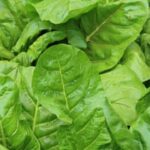Are you looking to start your own vegetable garden but don’t have a lot of space? Look no further than little pots for vegetable gardening. In this article, we will explore the many reasons why little pots are perfect for growing vegetables, as well as the numerous benefits of using them for your gardening needs.
When it comes to choosing the right containers for your vegetable garden, there are several factors to consider. From different materials like plastic, ceramic, and terracotta, to size and depth considerations for different vegetables, we’ll cover everything you need to know to get started with your little pot garden. Additionally, we will discuss the crucial requirements for drainage and airflow in little pots to ensure healthy plant growth.
Furthermore, we will delve into the best vegetables to grow in little pots. From a list of vegetables suited for small containers to tips on how to maximize space for a variety of vegetables, this section will provide valuable insights into making the most out of your limited gardening space. Whether you’re a beginner or an experienced gardener looking to try something new, little pots offer endless possibilities for cultivating your favorite vegetables.
Choosing the Right Little Pots for Your Vegetable Garden
When it comes to choosing the right little pots for your vegetable garden, there are several factors to consider in order to ensure healthy and successful growth of your plants. From material and size considerations to drainage and airflow requirements, selecting the appropriate pots can make a significant impact on the overall outcome of your container garden.
Different Materials for Little Pots
There are various materials available for little pots, including plastic, ceramic, and terracotta. Plastic pots are lightweight, durable, and affordable, making them a popular choice for beginner gardeners. Ceramic pots offer a more decorative option and provide good insulation for plant roots. Terracotta pots are breathable and allow for better air circulation, but they can also dry out quickly, requiring more frequent watering.
Size and Depth Considerations
Different vegetables have specific root system requirements, so it’s important to choose pot sizes that accommodate their growth. For example, shallow-rooted plants like lettuce and herbs can thrive in smaller containers, while deep-rooted vegetables like tomatoes and carrots will need larger and deeper pots to flourish.
Drainage and Airflow Requirements
Proper drainage is crucial for preventing waterlogged soil, which can lead to root rot in container gardens. Look for pots with drainage holes at the bottom or consider adding your own if necessary. Additionally, ensuring adequate airflow around the plants’ root systems is vital for healthy growth. Opt for pots with sufficient space for roots to breathe and avoid overcrowding plants in small containers.
By carefully considering these factors when choosing little pots for your vegetable garden, you can set yourself up for success in growing a thriving container garden filled with an abundance of fresh produce.
The Best Vegetables to Grow in Little Pots
When it comes to choosing the right vegetables to grow in little pots, there are several factors to consider. The size and depth of the pot, as well as the space available, will determine which vegetables are best suited for small containers. Some vegetables thrive in little pots due to their compact growth habits, making them ideal for limited space gardening.
List of Vegetables Suited for Small Containers
Some of the best vegetables to grow in little pots include cherry tomatoes, lettuce, radishes, green onions, peppers, and herbs like basil and parsley. These vegetables have shallow root systems and don’t require a lot of space to grow. Additionally, they can be easily harvested from small containers without taking up too much room.
Tips for Growing Specific Vegetables in Little Pots
For cherry tomatoes, it’s important to choose a deep pot to accommodate their root system and provide support for the vines as they grow. Lettuce is a great choice for little pots because it can be harvested gradually by picking outer leaves while allowing inner leaves to continue growing. Radishes are fast-growing and can thrive in shallow containers with well-draining soil.
How to Maximize Space for a Variety of Vegetables in Little Pots
To make the most of limited space, consider using vertical gardening techniques with little pots. Planting trailing or vining vegetables like peas or beans in hanging containers can help maximize space while adding visual interest to your vegetable garden. Additionally, companion planting strategies can be used to pair vegetables that complement each other’s growth habits and nutrient needs within the same little pot. This allows for a diverse range of crops to be grown even in small spaces.
By carefully selecting the right combination of vegetables and utilizing creative planting methods, you can create a bountiful vegetable garden even with limited space using little pots for vegetable gardening.
How to Prepare Little Pots for Vegetable Gardening
When it comes to preparing little pots for vegetable gardening, there are several important steps to ensure the success of your small container garden. Whether you are starting from seeds or using seedlings, proper preparation of the little pots is crucial for providing the right environment for your vegetables to thrive. Here are some essential tips for getting your little pots ready for vegetable gardening:
- Cleaning and Sanitizing Little Pots Before Planting: Before planting any vegetables in your little pots, it’s important to clean and sanitize them properly. This helps prevent the spread of diseases and ensures a healthy growing environment for your plants. You can wash the pots with soap and water, then sterilize them by soaking in a solution of one part bleach to nine parts water. Rinse thoroughly before use.
- Adding Proper Soil and Nutrients for Vegetables: Choosing the right soil mix is crucial for the success of your little pot garden. Opt for a high-quality potting mix that is well-draining and nutrient-rich. You can also add organic matter such as compost or worm castings to provide essential nutrients for your vegetables.
- Steps for Planting Seeds or Seedlings in Little Pots: Once your little pots are clean and filled with the appropriate soil mix, it’s time to plant your seeds or seedlings. Follow the instructions on the seed packets for proper planting depth and spacing. Keep in mind that different vegetables may have specific requirements, so be sure to research each type before planting.
By following these steps, you can ensure that your little pots are well-prepared for vegetable gardening success. Taking the time to properly clean, fill, and plant in your small containers will set the stage for healthy growth and bountiful harvests from your little pot garden. So get ready to roll up your sleeves and enjoy watching those tiny seeds grow into delicious vegetables.
Maintaining Your Vegetable Garden in Little Pots
When it comes to maintaining a vegetable garden in little pots, there are a few key factors to keep in mind to ensure the health and productivity of your plants. One important consideration is watering and fertilizing. Since little pots have limited soil capacity, they can dry out more quickly than traditional garden beds.
It is essential to check the moisture level of the soil regularly and water as needed. Additionally, using a good quality fertilizer or compost will help provide your vegetables with essential nutrients for healthy growth.
Pests and diseases can also pose a challenge when maintaining a vegetable garden in little pots. The confined space of small containers can make it easier for pests to infest your plants, so it’s important to regularly inspect for any signs of insect damage or disease. Using natural pest control methods such as neem oil or companion planting with pest-repelling herbs can help manage these issues without resorting to harmful chemicals.
Pruning and harvesting are crucial for the ongoing care of your vegetable garden in little pots. Some vegetables may require regular pruning to encourage optimal growth and productivity. Harvesting at the right time ensures that your vegetables are at their peak flavor and quality. Regularly removing mature produce also allows space for new growth and prevents overcrowding in small containers.
These maintenance tips will help you create a flourishing vegetable garden in little pots, providing fresh and nutritious produce right at your fingertips.
| Maintenance Tips | Description |
|---|---|
| Watering and Fertilizing | Check soil moisture regularly; use quality fertilizer/compost |
| Pest and Disease Management | Inspect for pests/disease; use natural control methods |
| Pruning and Harvesting | Regularly prune for optimal growth; harvest at the right time |
Creative Ways to Arrange Little Pots for a Beautiful Vegetable Garden
When it comes to vegetable gardening, the use of little pots offers a versatile and attractive option for creating a beautiful and functional garden space. The compact nature of little pots allows for creative arrangements that can make the most of smaller outdoor or indoor areas. This section will explore various creative ways to arrange little pots for a stunning vegetable garden, maximizing both aesthetics and productivity.
One innovative approach to arranging little pots for a vegetable garden is through vertical gardening. This method involves utilizing wall-mounted structures or tall shelving units to stack and display small containers. Vegetables such as cherry tomatoes, peppers, herbs, and salad greens are particularly well-suited for vertical growing in little pots. Vertical gardening not only saves space but also adds visual interest to any outdoor or indoor area.
Another strategy for arranging little pots in a beautiful vegetable garden is through companion planting. This technique involves pairing compatible plant species in the same container or grouping complementary plants together in close proximity. For example, planting basil alongside tomatoes can enhance the flavor of the tomatoes while also providing natural pest repellent properties. By carefully planning and arranging little pots with companion plants, gardeners can create visually appealing displays that offer mutual benefits for the vegetables.
In addition to functional approaches, there are various stylish and decorative ways to arrange little pots in a vegetable garden space. From using tiered plant stands to creating colorful patterns with differently shaped containers, the design possibilities are endless. Utilizing contrasting textures, colors, and heights can add visual appeal to a small container garden while also optimizing space for growing an assortment of vegetables.
| Creative Arrangement Techniques | Benefits |
|---|---|
| Vertical Gardening | Saves space; adds visual interest |
| Companion Planting | Mutual benefits for plants; enhanced flavors; natural pest repellent properties |
| Stylish Decorative Displays | Optimizes space; adds visual appeal |
Tips for Success With Little Pots for Vegetable Gardening
Little pots for vegetable gardening offer a convenient and versatile way to cultivate your own fresh produce, even in limited spaces. Whether you have a small balcony, patio, or simply want to create a compact garden area, little pots are the perfect solution. Here are some tips for success with little pots for vegetable gardening:
- Maximizing sunlight for little pot gardens: Ensure that your little pots receive adequate sunlight throughout the day, as most vegetables require at least 6-8 hours of direct sunlight. Place your pots in an area with good exposure to the sun, or consider using hanging or vertical arrangements to maximize light.
- Avoiding common mistakes for beginners in little pot gardening: One common mistake is overcrowding little pots with too many plants, which can lead to stunted growth and competition for resources. Be mindful of the space requirements for each vegetable and avoid overplanting in your containers.
- Long-term care and maintenance for successful vegetable growth in small containers: Regular watering and fertilizing are essential for healthy plant growth in little pots. Be sure to monitor soil moisture levels and provide appropriate nutrients as needed to support vigorous and productive vegetables.
By following these tips and embracing the potential of little pots for vegetable gardening, you can enjoy a bountiful harvest of fresh produce from your compact container garden. Whether you’re a beginner or experienced gardener, there’s endless potential for creativity and productivity when it comes to cultivating vegetables in little pots.
With some careful planning and attention to detail, you’ll be on your way to enjoying the rewards of homegrown vegetables right from your own little pot garden.
Conclusion
In conclusion, little pots offer a world of possibilities for vegetable gardening. With the right selection, preparation, and maintenance, these small containers can yield an impressive array of fresh produce. The benefits of using little pots for vegetable gardening are plentiful, from their versatility in small spaces to the convenience they offer for apartment dwellers or those with limited outdoor areas. By embracing the potential of little pots, gardeners can enjoy a bountiful harvest regardless of their living situation.
The key to success with little pots for vegetable gardening lies in careful planning and attention to detail. Choosing the right materials, sizes, and depths for different vegetables is crucial for their growth and development. Proper drainage and airflow must also be considered to ensure the health of the plants. With the right preparation and maintenance, gardeners can grow a variety of vegetables in little pots – from herbs and leafy greens to tomatoes and peppers.
Overall, little pots provide a unique opportunity for individuals to connect with nature and grow their own food, regardless of space constraints. By maximizing sunlight, avoiding common mistakes, and investing in long-term care and maintenance, anyone can experience the joy of harvesting homegrown vegetables from little pots.
With resources available for further reading on little pot gardening techniques, there is no better time than now to start your own small container garden and reap the rewards of growing your own fresh produce at home.
Frequently Asked Questions
What Vegetables Do Well in Small Pots?
Many vegetables can thrive in small pots, including cherry tomatoes, lettuce, spinach, peppers, and radishes. These compact plants are well-suited for container gardening and can produce a great harvest even in limited space.
What Is the Best Type of Container to Grow Vegetables In?
The best type of container to grow vegetables in is one that provides good drainage, adequate space for root growth, and is made of a durable material. Options like plastic or wooden containers with drainage holes are commonly recommended for vegetable gardening.
What Is the Cheapest Container for Growing Vegetables?
When it comes to the cheapest containers for growing vegetables, many DIY options exist. Repurposed items such as buckets, plastic storage bins, or even old tires can be used effectively and affordably for container gardening. It’s important to ensure these containers have proper drainage before planting the vegetables.

If you’re looking to get into vegetable gardening, or are just looking for some tips on how to make your current garden better, then you’ve come to the right place! My name is Ethel and I have been gardening for years. In this blog, I’m going to share with you some of my best tips on how to create a successful vegetable garden.





